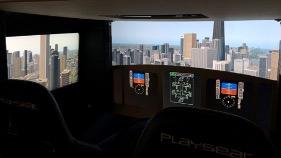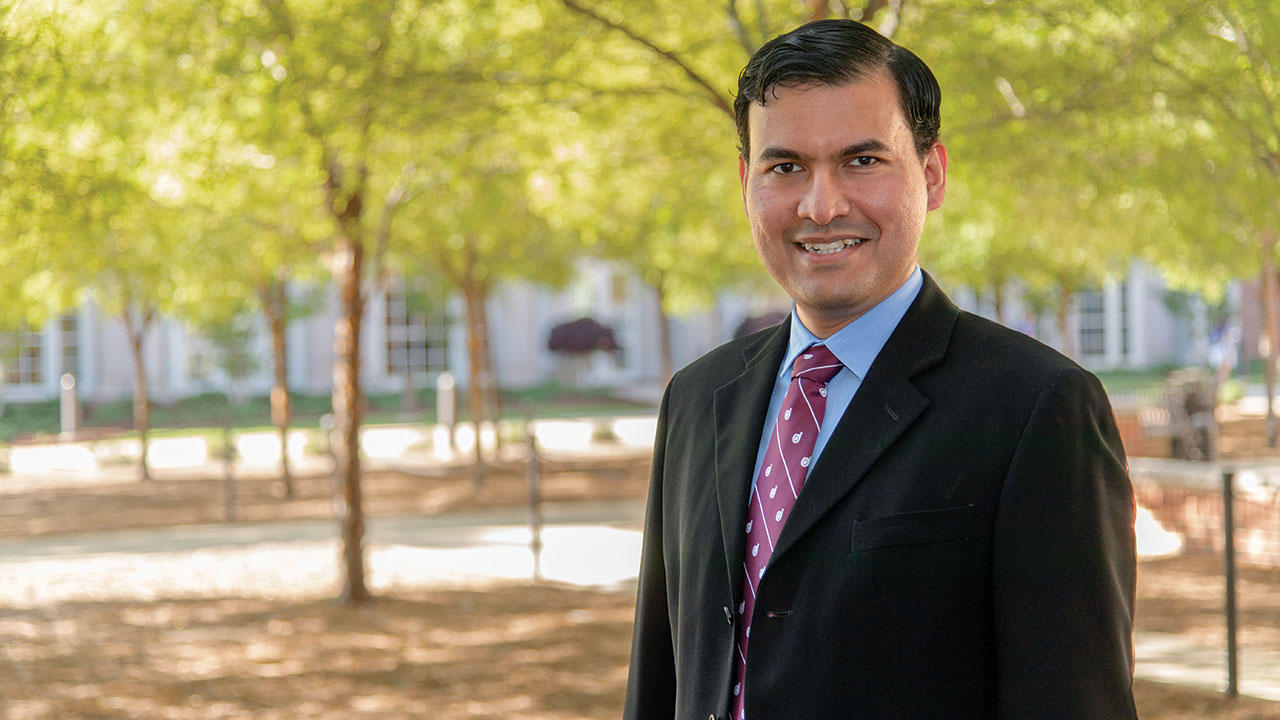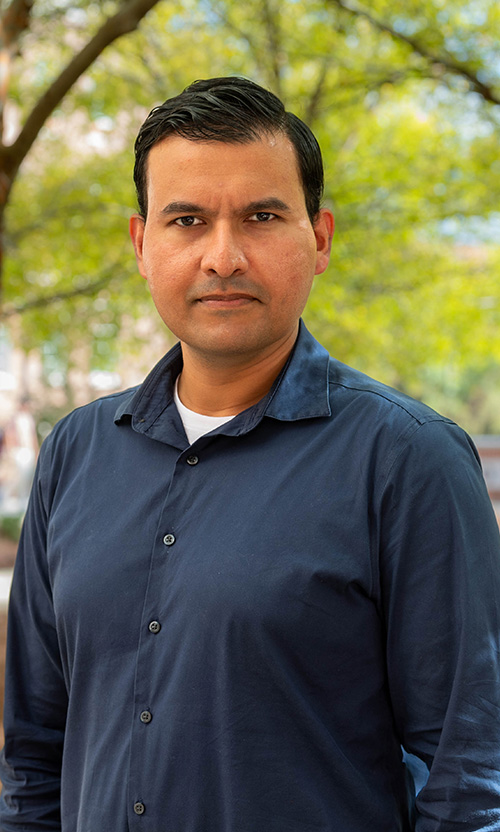Aerospace professor, students, awarded funds from FAA for research
Imon Chakraborty, assistant professor in the Department of Aerospace Engineering and Director of the Vehicle Systems, Dynamics, and Design Laboratory (VSDDL), was recently awarded a grant from the Federal Aviation Administration (FAA) for his study, “Flight Simulation-Driven Research into Simplified Vehicle Operations for Urban Air Mobility.”
The one-year cooperative agreement will support three VSDDL/aerospace graduate students, Aashutosh Aman Mishra, Anthony Comer, and Noah Miller, who will work with Dr. Chakraborty on different aspects of this project.

The Urban Air Mobility concept of operations aims to field efficient Electric Vertical Takeoff and Landing (e-VTOL) aircraft to transport occupants quickly between intra-urban and possibly inter-urban locations. The first-generation designs will have significant automation but still feature human pilots. The VSDDL team’s goal is to investigate Simplified Vehicle Operations (SVO), which includes the design of the aircraft’s flight control system architecture, flight control inceptors, and cockpit displays with the goal of allowing pilots to operate these complex e-VTOL UAM aircraft safely and proficiently with more streamlined, cost-effective training. The FAA is interested in understanding the safety, certification, and pilot-training impacts of urban air mobility (UAM) aircraft.
Chakraborty, also a private pilot, said this topic is close to his heart.
“I love flying, but the aircraft that I fly now and learned to fly in require what’s called stick-and-rudder piloting, where the pilot has to constantly manipulate multiple controls,” he said. “I’ve always been interested in solutions that simplify piloting, reducing the pilot’s workload as well as the time and cost of pilot training. This is especially relevant for UAM.”
Central to the VSDDL team’s research will be their custom-designed and reconfigurable flight simulators, which will allow them to simulate the flight characteristics of UAM aircraft and assess the interaction of human pilots with the aircraft through piloted flight simulations.
“We designed and built our flight simulators essentially from scratch over the past few years, so that we have full control over the flight simulation models, flight control laws, cockpit displays, inceptor layouts and functions, and so on,” said Chakraborty. “Those are precisely the capabilities that we will use to carry out this research.”
The first of four main research questions the project aims to investigate is the design of pilot-friendly flight control systems that facilitate the SVO concept.
“The goal is to design a flight control architecture that always keeps the UAM aircraft within a safe operating envelope and is at the same time easy and intuitive for the UAM pilot to understand and interact with,” said Chakraborty.
The second goal relates to the design of the cockpit displays that convey information to the pilot about the state of the aircraft and its systems. “We want to better understand how to convey relevant information about this category of aircraft to pilots without causing information overload,” Chakraborty said. “Given current battery technology, first-generation UAM aircraft are going to be very energy-limited. So, we want the pilot to be intuitively but acutely aware of how well they are managing their available energy.”
The third goal relates to the design of inceptors -- devices used by the pilot to give commands to the aircraft’s fly-by-wire flight computers.
“These UAM aircraft will have some characteristics of helicopters and some of airplanes,” Chakraborty said. “Should their controls be like those in helicopters or those in airplanes, or perhaps neither? When the pilot works the controls, what are they actually commanding the aircraft to do? This is a fascinating open-ended question that we want to study further.”
The fourth goal aims to assess how prior piloting experience, or lack thereof, impacts piloting performance when it comes to novel UAM aircraft. The team will invite instructors from Auburn’s Aviation Department (representing veteran aviators), students undergoing flight-training in that department (representing trainee or less-experienced aviators), and participants with no prior piloting experience.
“Each group will perform piloted simulations with a UAM aircraft model equipped for SVO architecture in one of our simulators,” said Chakraborty. “We expect to see some fascinating insights from these piloted simulations.” Media Contact: , jem0040@auburn.edu, 844.3447


